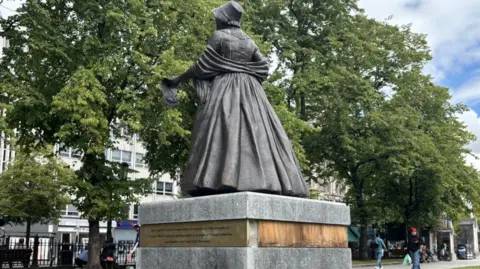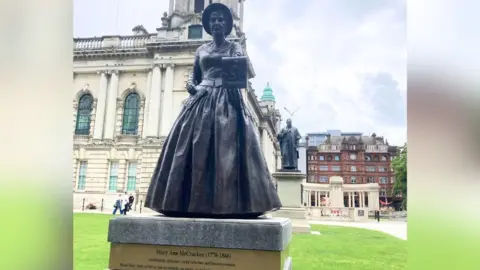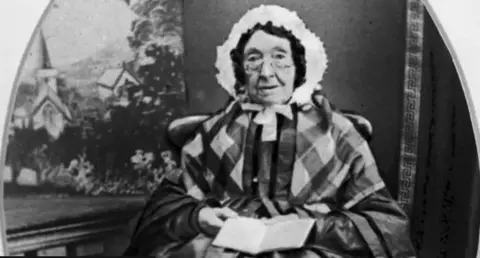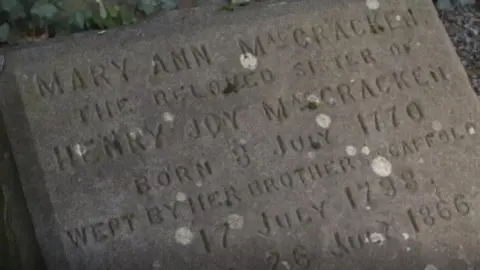Mary Ann McCracken statue damaged in suspected vandalism
 PA Media
PA MediaA statue of anti-slavery campaigner Mary Ann McCracken at the front of Belfast City Hall has been damaged in a suspected act of vandalism.
The Irish language section of the four plaques at the base of the statue was left partially torn on Friday morning.
The damaged plaque has since been removed, and Belfast City Council say the incident "will be looked into" and the plaque "replaced as soon as possible".
The statue was unveiled on International Women's Day in 2024 alongside a statue of suffragist and trade unionist Winifred Carney.

'Disgusting'
Belfast SDLP Councillor Gary McKeown condemned the attack on the statue and called for an investigation into the incident.
"The vandalism of the Mary Ann McCracken statue is disgusting and will appal people right across Belfast and beyond," he said.
"Belfast has an embarrassingly low number of statues dedicated to women, so the unveiling of this one in the grounds of City Hall last year was particularly welcome and I was delighted to be in attendance.
He added that it is "notable that it was an Irish language section on the statue that was targeted" which he said shows more intolerance.
 National Musuems Northern Ireland
National Musuems Northern IrelandWho was Mary Ann McCracken?
Mary Ann McCracken was born into a middle-class Presbyterian family in 1770 and was one of seven children.
Her father was a sea captain and her grandfather set up the News Letter, the world's oldest English-language daily newspaper.
She went to school with boys and girls - which was unusual at the time - and was heavily involved in the Belfast Charitable Society and Poor House which her family helped to set up.
She was a supporter of the United Irishmen, a group that was co-founded by her brother Henry Joy McCracken. He was later executed in 1798 for his role in the failed rebellion.

She campaigned all her life to end slavery as an active member of the Belfast Ladies Anti-Slavery Association, even refusing to eat sugar as it was a product of the slave trade and West Indies plantations.
Up until her late 80s, she could be found in Belfast's docks where she warned emigrants bound for the United States about slavery.
She died in July 1866 at the age of 96, but her grave remained unmarked until 1909 when her name and the inscription Díleas go h-éag, or Faithful Until Death, was added.
